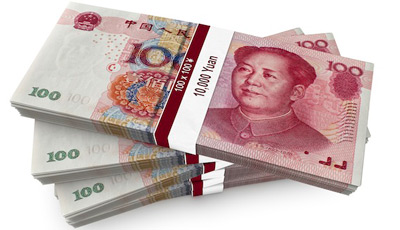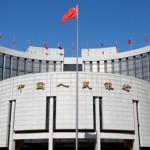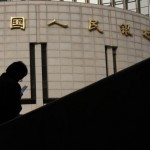China’s Yuan edges lower on Dollar demand for dividend payments

China’s yuan weakened marginally against the dollar on Wednesday as overseas-listed Chinese companies bought dollars to pay interim dividends, traders said.
Spot yuan stood at 6.2552 per dollar at midday, easing 0.02 per cent from Tuesday’s close as the People’s Bank of China (PBOC) refrained from intervening either way, according to traders.
June is the peak month for Chinese companies listed in offshore markets to buy dollars in order to make interim cash dividend payments to investors, traders said. Typically such purchases are a feature of the currency market through until mid-July.
Dollar demand from some of the biggest firms listed in Hong Kong could reach as much as $18 billion from June to early July, according to Huang Yi, head of foreign exchange trading at China Guangfa Bank in Shanghai.
“That amounts to a sudden outflow of $18 billion dollars under the capital account,” he said.
Huang, however, added that such an outflow could be offset if China’s trade surplus reaches $28 billion in June, based on the performance in previous years.
Traders said they expected a rough balance of dollar supply and demand in June, forecasting that the yuan will mostly move in a narrow range of 6.23 to 6.27 during the month.
On Wednesday, the PBOC set its official midpoint at 6.1693, or 0.03 per cent stronger than Tuesday. The official daily trading band allows the exchange rate to fluctuate 2 per cent either side of the midpoint.
The yuan usually follows the central bank’s guidance to rise or fall, but the corporate purchases made it buck the trend on Wednesday, traders said. Moreover, the marginal rise in the midpoint was not a strong enough sign that the PBOC wanted the yuan to strengthen.
The PBOC has guided the yuan to depreciate by 3.2 per cent against the dollar so far this year to deter speculators from betting on a non-stop yuan rise.
Before this year’s unexpected depreciation, the yuan had steadily appreciated by more than 30 per cent since its landmark revaluation in 2005.
In past years, when the yuan was rising, dollar supply was sufficient to meet demand, but the yuan’s lingering weakness this year has persuaded firms to retain more dollars, so dollar demand exceeds supply at times, traders said.
Central bank data published on Tuesday showed the PBOC’s foreign exchange assets rose a moderate 84.6 billion yuan ($13.5 billion) in April, less than half of the 174.1 billion yuan rise seen in March.
The increase in April, which mainly reflects the central bank’s foreign exchange purchases on the yuan market, was also the smallest since July last year.
China has seen huge capital inflows and trade surpluses for more than a decade, forcing the PBOC to absorb large quantities of dollars to moderate the upward pressure on the yuan.
Source: economictimes



























